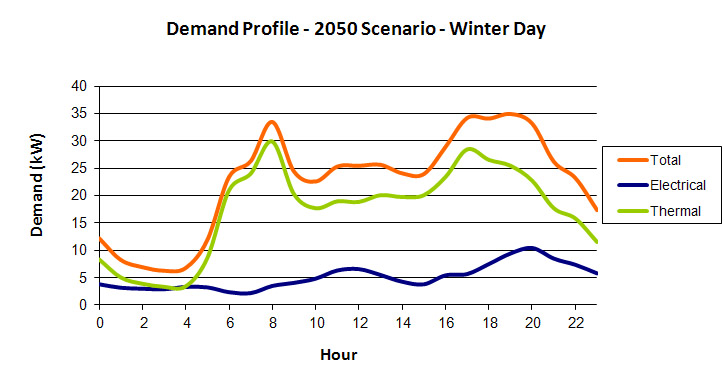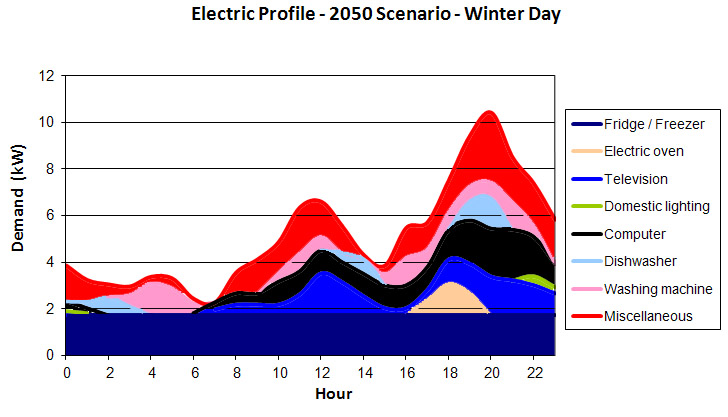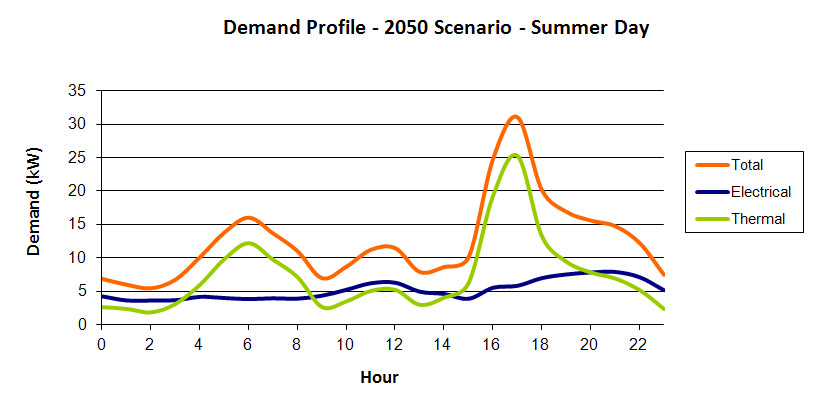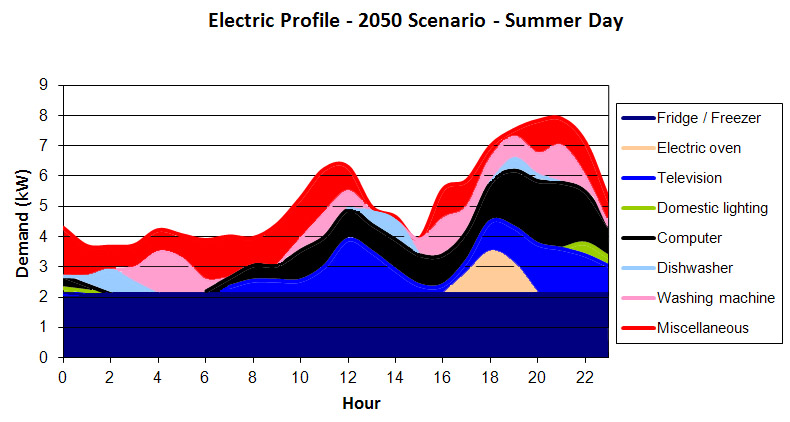
Menu:
2050 Scenario
The generation of the demand profiles for the 2050 scenario was based on an extensive literature review and study of government policies driving an increase in the energy efficiency of buildings to make them net zero energy buildings [1,2]. The profiles also consider projections where more people may be working from home and that the heating will be 100% electric. This scenario procedure is similar to the 2020 scenario with the appliance hourly consumption rate and projected estimations of improved appliance efficiencies for 2050 calculated. According to government projection, energy efficiency in buildings will improve by 30% in 2050.
The following assumptions where made for the creation of the 2050 scenario:
- From 2012 to 2050, 30% more of the community people will work at home
- The thermal demand would be reduced by ~80 % due to improvements in insulation for buildings.
- The average appliances efficiency improvement is 70%.
- Misc includes: Microwaves, hi-fis, kettles, hairdryers, toasters, irons, vacuum cleaners, tumble dryers, printers…
Case 1
Winter profile:

Winter electrical appliances breakown:

Summer profile:

Summer electrical appliances breakown:

Case 2
As we move towards the future, the uncertainties within our scenarios increase as our assumptions increase. Thus for the 2050 scenario we have included a second case, in which our demand profile is time shifted as well as reduced in demand. This is shown graphically below:


We can see that case 2 has peaks at different times to the first 2050 demand profile. It does have the same total demand for ease of comparison.
References
[1] Buildings Performance Institute Europe. Principles For nearly Zero-energy Buildings. ISBN: 9789491143021. Accessible at: http://www.bpie.eu/nearly_zero.html (Accessed 11/03/12).
[2] Chwieduk, D. (2003). Towards sustainable-energy buildings. Applied Energy, 76, p211-217